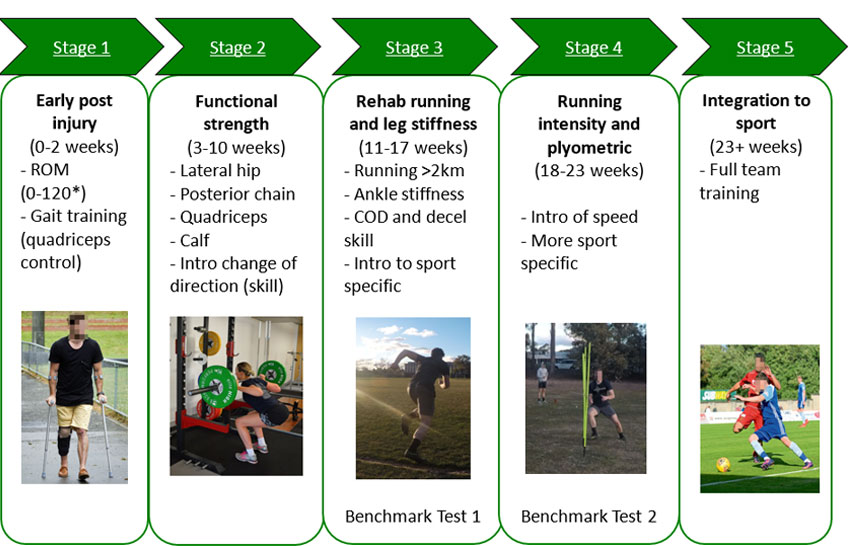Return to Play in Elite Sport Following ACL Injury of the Knee
Anterior cruciate ligament (ACL) injuries of the knee represent a serious concern in sports, not only because of time loss from sport but also because of the long-term health consequences, including a substantially increased risk of knee osteoarthritis and impaired lower limb function 23 as well as a re-injury rate of between 5-30% depending on the pre-injury competitive level played, and the goals of the athlete post-injury 12 18. Following injury, return to sport (RTS) is generally permitted as soon as six to twelve months following surgery depending on the graft used in surgical cases 28 (or even sooner in the cases of non-operative management) and the desired level of risk 5. However, some authors suggest that return to sport might even be delayed until up to 2 years after surgery for the lowest chance of reinjury 16, which can be problematic given the often capricious nature of professional sport.
Case Study – How I Rehab an Athlete Post ACL?
For simplification, I generally loosely plan rehab into five distinct stages. The timeframes I’ve quoted are indicative to the ones I would use for a stock-standard ACL reconstruction post-surgery:

Stage 1 – Early post injury (0-2 weeks)
The goal of this phase is on restoration of range of movement, particularly normal walking and knee extension. The former is a vastly underrated quantity as the ability to walk with normal physiological extension of the knee implies good range of movement and quads activation. Once an athlete can achieve these two things, I will generally start active lower body rehab in the gym. Often there is some residual swelling during this phase and as long as the athlete can actively bend the knee past 120deg I’m not too concerned.











Responses